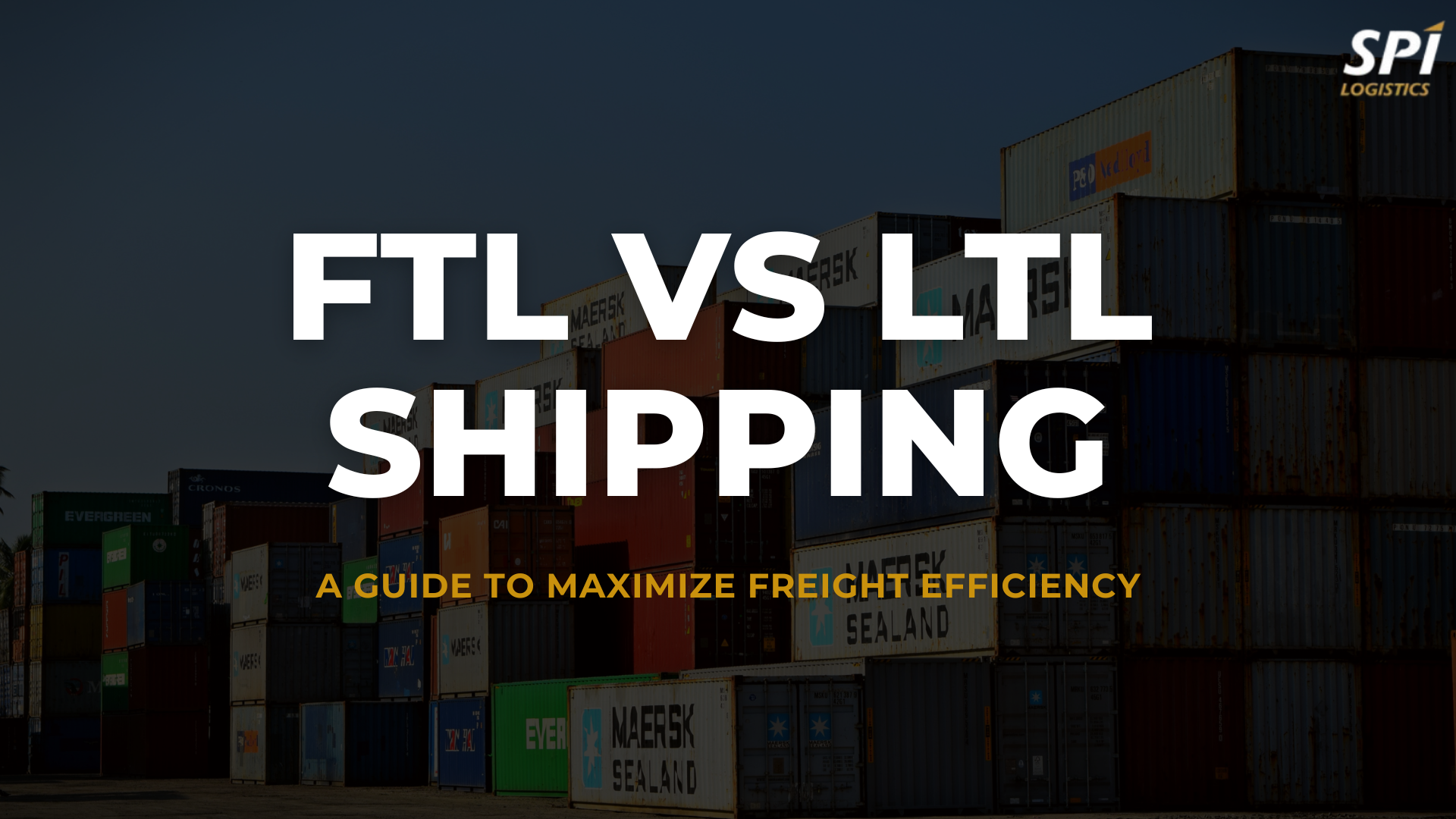Regarding shipping, businesses constantly struggle between cost-efficiency and reliable delivery. One of the most common options? Standard shipping. But what is standard shipping, and how can it benefit your supply chain?
In this article, we will cover everything you need to know about standard shipping, including its key features, most significant challenges, and actionable advice for becoming more efficient.
What is Standard Shipping?
Standard shipping is the most common and cheapest shipping option for goods. Unlike expedited shipping and even express shipping, standard shipping focuses on affordability and timely delivery balance. It’s a default for companies with no immediate delivery but yet want reliable shipments at a fair pace
Key Characteristics of Standard Shipping:
• Cost-Effective: Lower shipping expense in comparison with expedited shipping
• Predictable delivery times: Usually 3–7 working days domestically.
• Wide Availability: Offered by most major carriers.
• Best for Non-Urgent Shipments: Ideal for companies with flexible delivery timelines

According to the American Trucking Association (ATA), standard shipping accounts for 73% of all domestic freight movement, underscoring its dominant role in logistics (ATA, 2024).
“For businesses looking to optimize logistics costs, standard shipping remains the best choice for non-urgent deliveries. It allows companies to maintain stable supply chains without the premium costs associated with expedited freight.”
What is Standard Ground Shipping?
Standard ground shipping is a shipping method that relies on ground transportation, such as trucks or trains, to move packages from one location to another. Unlike air freight, which is faster but more expensive, ground shipping provides a cost-effective solution for domestic deliveries.
Standard Ground Shipping vs. Standard Shipping: ground shipping usually refers to transportation by truck or rail within a country, whereas standard shipping can include air, sea, or ground transportation.
How does standard ground shipping compare to other shipping methods in terms of cost, delivery time, and reliability? Have you ever experienced delays with ground shipping, and if so, what was the cause?
How Long Does Standard Shipping Take?
Delivery time will vary depending on the carrier, distance, and dimensions of the shipment. On average:
• Domestic standard shipments: 3–7 working days
• International standard shipments: 7–14 working days, depending on customs clearance
Factors Affecting Transit Times:
1. Carrier Network: There are carriers with larger and faster and efficient routes.
2. Distance & Shipping Zones: Greater distances obviously add to transit time.
3. Weather & Traffic Delays: Seasonal fluctuations and congestion impact delivery schedules.
4. Customs & Border Clearing: There is a processing period for international shipments.
A U.S.-based e-commerce company experienced 15% late deliveries due to inefficient standard shipping. By optimizing carrier selection and implementing route analytics, their on-time delivery rate improved to 94% while maintaining a 12% cost reduction (Logistics Insights, 2024).
Selecting the right carrier is crucial for optimizing standard shipping. Below is a breakdown of major providers:
- FedEx (Federal Express): An international shipping company known for its reliable express delivery services, FedEx offers a range of options, including overnight, two-day, and ground shipping for domestic and international packages.
- UPS (United Parcel Service): A global shipping giant specializing in small parcel delivery and freight services. UPS Ground and UPS Standard are popular choices for cost-effective shipping. UPS standard ground shipping time generally falls between 1 to 5 business days, depending on the destination
- USPS (United States Postal Service): A government-operated postal service that provides affordable shipping solutions, including First-Class Mail, Priority Mail, and Retail Ground. It is widely used for domestic shipping within the United States.
- DHL (Dalsey, Hillblom, and Lynn): A leading international courier service specializing in global express shipping, particularly in Europe and Asia. DHL is a top choice for international logistics and customs solutions.
| Courier | Domestic Transit Time | International Transit Time | Key Features |
| FedEx | 3–5 business days | 5–10 business days | Strong tracking, global coverage |
| UPS | 3–6 business days | 6–12 business days | Competitive pricing, reliable service |
| USPS | 2–8 business days | 7–14 business days | Affordable, best for small parcels |
| DHL | 4–7 business days | 3–8 business days | Fast international delivery, customs expertise |
“Selecting the right carrier for standard shipping is more than just comparing costs—service reliability and transit time consistency are key factors that impact the supply chain.”
Have you ever experienced delays with standard shipping? What strategies have you used to mitigate them?
Common Challenges in Standard Shipping and Solutions
1. Delays Caused By Inclement Weather and Traffic
Solution: Partner with carriers with real-time re-routing capabilities and real-time information.
2. Limited Visibility for Clients
Solution: Use GPS tracking software and send automated delivery notifications.
3. Cost and Service Level Trade-off
Solution: Offer multi-tiered pricing structures, with options for clients to opt for both speed and savings.
“The biggest issue with standard shipping is unpredictability. Freight brokers who leverage AI-driven route optimization and real-time tracking can significantly reduce late deliveries.”
What tools or strategies have you found most effective for improving standard shipping reliability?
How Freight Brokers Can Optimize Standard Shipping Services
To stay competitive, freight brokers must go beyond minimum service level offerings. Some of them include:
1. Enhance Carrier Relationships
• Negotiate volume discounts with customers
• Collaborate with regional carriers to minimize last-mile delays.
2. Leverage technology
• Use Transportation Management Systems (TMS) to track shipments
• Offer automated price comparison tools for expense-minimizing
3. Educate Clients regarding Shipping Options
• Offer side-by-side cost and speed comparisons
• Explain how proper packaging helps in minimizing danger
4. Offer Industry-Specific Solutions
• Retail: Help retail brands expand with reliable shipping.
• Manufacturing: Ensure timely delivery of raw materials to avert production downtime
• Healthcare: Facilitate temperature-sensitive drugs’ logistics
A freight broker helped a California-based auto parts distributor lower logistics costs by 22% by consolidating shipments and using regional carriers for shorter routes (Freight Analytics Report, 2024).
“Freight brokers who proactively optimize standard shipping—by selecting the right carriers and educating clients—gain a competitive advantage. Efficiency translates directly into cost savings.”
Do you need help navigating the complexities of standard shipping? Contact us today to learn how our freight brokerage services can simplify your logistics needs.
Frequently Asked Questions About Standard Shipping
1. Is standard shipping reliable?
Yes. While not necessarily rapid in terms of expedited alternatives, 98% of timely shipments are adequately handled (Freight Performance Index, 2024).
2. How Fast is Standard Shipping?
When considering shipping options, many ask, “how fast is standard shipping?” While not as quick as express services, standard shipping remains an efficient choice, particularly for non-urgent items. The speed depends on the carrier, distance, and selected service.
3. How Many Days for Standard Shipping?
The answer depends on the carrier and shipping method used. The general timeframe is 3 to 7 business days, but peak seasons like holidays can extend these delivery estimates.
4. How can I save shipping costs?
• Consolidate shipments for bulk discounts
• Negotiate better shipping rates with carriers
• Use AI-based logistics software for smarter carrier selection
5. How Long Does UPS Standard Shipping Take?
UPS standard shipping time varies based on the shipping zone. Usually, UPS standard shipping takes 3 to 5 business days for most domestic deliveries. If you are explicitly using UPS standard ground shipping, expect similar timeframes, but delays may occur based on package volume and distance.
6. What are delivery times for UPS standard shipping in the US?
Your package should arrive within 1 to 6 business days, depending on the distance between the origin and destination.
7. How long is free standard shipping?
Many e-commerce stores offer free shipping as an incentive. The timeframe is typically the same as standard shipping, ranging from 3 to 7 business days. Some retailers use cost-effective shipping carriers, which may result in slightly longer delivery times.
Are you looking for reliable shipping solutions? Let’s connect and discuss how we can tailor our services to meet your business goals.
Dominate the Freight Industry with Smarter Standard Shipping
Standard shipping may not be the flashiest option in logistics, but it’s undoubtedly one of the most important. Whether you’re using domestic standard shipping or standard ground shipping, understanding delivery times can help you plan better.
If you frequently shop online or run a business, knowing United Parcel Service (UPS) ground delivery, FedEx shipping, USPS ground options, and DHL international delivery will ensure a smooth logistics experience.
Are you ready to take your freight brokerage to the next level? Start by optimizing your standard shipping services today!
References
American Trucking Associations (ATA). (2024). Freight market insights. Retrieved from https://www.trucking.org
Freight Performance Index. (2024). Standard shipping reliability report. Retrieved from https://www.freightindex.com
Freight Analytics Report. (2024). Case study on logistics cost optimization. Retrieved from https://www.freightanalytics.com
Logistics Insights. (2024). E-commerce shipping trends and impact on standard freight. Retrieved from https://www.logisticsinsights.com




